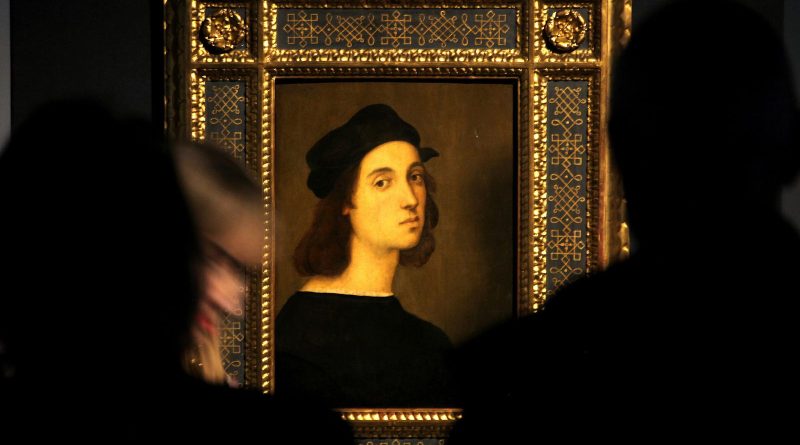New Research Suggests Bloodletting, Pneumonia Killed Raphael | Smart News
[ad_1]
When Raffaello Sanzio da Urbino—better known as Raphael—was just 37 years old, he died of a sudden illness often cited as syphilis. Now, on the 500th anniversary of the Renaissance painter’s passing, a new paper published in the journal Internal and Emergency Medicine outlines an alternative explanation for his untimely demise.
Per the study, Raphael’s secrecy regarding his late-night outings may have led doctors to misdiagnose his ailment and prescribe dangerous treatment that ultimately accelerated his death. Several decades later, Italian painter Giorgio Vasari perpetuated tales of the artist’s salacious sex life in his comprehensive chronicle of Renaissance art, leading contemporaries and future historians alike to theorize that Raphael had succumbed to a sexually transmitted disease.
But accounts of Raphael’s death point to a different culprit, reports Angela Giuffrida for the Guardian. Though Vasari wrote that the painter suffered from an intense fever for just one day, other observers said the disease lasted for one or two weeks.
“He didn’t suffer from an intestinal disease,” lead author Michele Augusto Riva, an expert on the history of medicine at the University of Milan-Bicocca, tells the Guardian, “and for this reason we hypothesized pneumonia.”
At the height of his brief career, Raphael’s main rival was Michelangelo. Both completed major commissions for Pope Julius II, with the younger artist creating frescoes for the pontiff’s private rooms and the elder painting the ceiling of the Sistine Chapel. When Raphael fell ill in spring 1520, Julius—fearful of losing such a valuable artist—sent “the best doctors in Rome … to [treat] him,” Riva tells Agence France-Presse’s Ella Ide.
/https://public-media.si-cdn.com/filer/a1/50/a15011d5-cabe-4677-a416-72499efb7084/2560px-_the_school_of_athens__by_raffaello_sanzio_da_urbino.jpg)
(Public domain via Wikimedia Commons)
According to Vasari, Raphael failed to disclose his many evening escapades with his mistress. Unaware that the artist had exposed himself to the chilly night air, his doctors viewed the illness as an internal problem.
Five hundred years ago, doctors considered human disease in terms of the balance of four fluids called humors. Raphael, struck down by a fever, was overheated—a sure sign of an imbalance. To correct this, the physicians decided to release their patient’s “excess” fluids.
The doctors began bloodletting “insomuch that [Raphael] was weakened and felt himself sinking; for he was in need rather of restoratives,” according to Vasari.
Per the paper, the doctors might not have performed bloodletting if they’d realized Raphael’s sickness was centered in his lungs. At the time, doctors had started debating bloodletting’s usefulness, especially when treating diseases recognized today as contagious.
One source detailed by the researchers wrote that Raphael’s disease lasted 15 days, while another estimated its duration as eight days. Crucially, the artist had enough time to get his affairs in order, dictating his will to provide funds for his mistress’ care and entrusting the contents of his studio to his top assistants.
Despite dying at such a young age, Raphael left behind a trove of artwork for future generations to enjoy. This year, many institutions are holding special exhibitions of the painter’s work to honor the 500th anniversary of his death. A blockbuster show in Rome reopened in June after temporarily closing due to the COVID-19 pandemic. As Cristina Ruiz reports for the Art Newspaper, visitors are sorted into groups of six and escorted through the galleries by a guard.
Another commemorative effort centers on Raphael’s grave in Rome’s Pantheon. Each day this year, Italy will place a red rose on the Old Master’s tomb, which reads, “Here lies Raphael, by whom Nature herself feared to be outdone while he lived, and when he died, feared that she herself would die.”
[ad_2]
Shared From Source link Arts
